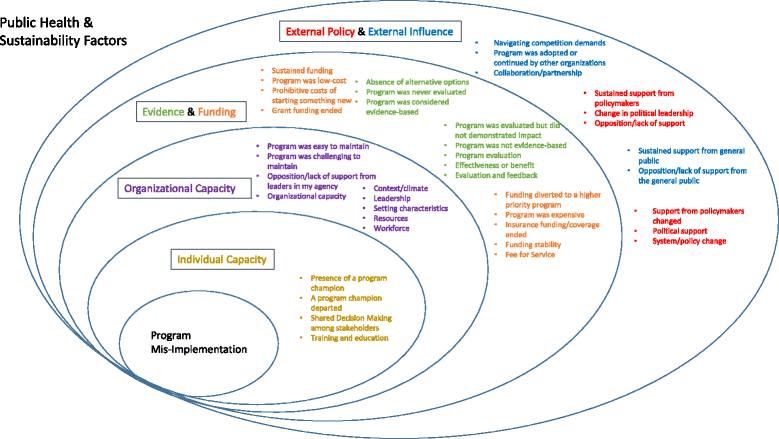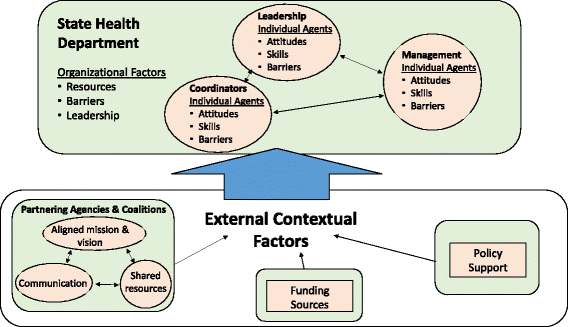Toward optimal implementation of cancer prevention and control programs in public health: a study protocol on mis-implementation
- PMID: 29566717
- PMCID: PMC5865376
- DOI: 10.1186/s13012-018-0742-9
Toward optimal implementation of cancer prevention and control programs in public health: a study protocol on mis-implementation
Abstract
Background: Much of the cancer burden in the USA is preventable, through application of existing knowledge. State-level funders and public health practitioners are in ideal positions to affect programs and policies related to cancer control. Mis-implementation refers to ending effective programs and policies prematurely or continuing ineffective ones. Greater attention to mis-implementation should lead to use of effective interventions and more efficient expenditure of resources, which in the long term, will lead to more positive cancer outcomes.
Methods: This is a three-phase study that takes a comprehensive approach, leading to the elucidation of tactics for addressing mis-implementation. Phase 1: We assess the extent to which mis-implementation is occurring among state cancer control programs in public health. This initial phase will involve a survey of 800 practitioners representing all states. The programs represented will span the full continuum of cancer control, from primary prevention to survivorship. Phase 2: Using data from phase 1 to identify organizations in which mis-implementation is particularly high or low, the team will conduct eight comparative case studies to get a richer understanding of mis-implementation and to understand contextual differences. These case studies will highlight lessons learned about mis-implementation and identify hypothesized drivers. Phase 3: Agent-based modeling will be used to identify dynamic interactions between individual capacity, organizational capacity, use of evidence, funding, and external factors driving mis-implementation. The team will then translate and disseminate findings from phases 1 to 3 to practitioners and practice-related stakeholders to support the reduction of mis-implementation.
Discussion: This study is innovative and significant because it will (1) be the first to refine and further develop reliable and valid measures of mis-implementation of public health programs; (2) bring together a strong, transdisciplinary team with significant expertise in practice-based research; (3) use agent-based modeling to address cancer control implementation; and (4) use a participatory, evidence-based, stakeholder-driven approach that will identify key leverage points for addressing mis-implementation among state public health programs. This research is expected to provide replicable computational simulation models that can identify leverage points and public health system dynamics to reduce mis-implementation in cancer control and may be of interest to other health areas.
Keywords: Agent-based models; Cancer control; Mis-implementation.
Conflict of interest statement
Ethics approval and consent to participate
The study was approved by the institutional review board of Washington University in St. Louis (reference number: 201611078). This study also received approval under Washington University’s Protocol Review and Monitoring Committee.
Consent for publication
Not applicable
Competing interests
The authors declare that they have no competing interests.
Publisher’s Note
Springer Nature remains neutral with regard to jurisdictional claims in published maps and institutional affiliations.
Figures
References
-
- Cancer Facts & Figures 2015. http://www.cancer.org.
-
- American Cancer Society . Cancer facts and figures 2016. Atlanta: American Cancer Society; 2016.
Publication types
MeSH terms
Grants and funding
LinkOut - more resources
Full Text Sources
Other Literature Sources
Medical





